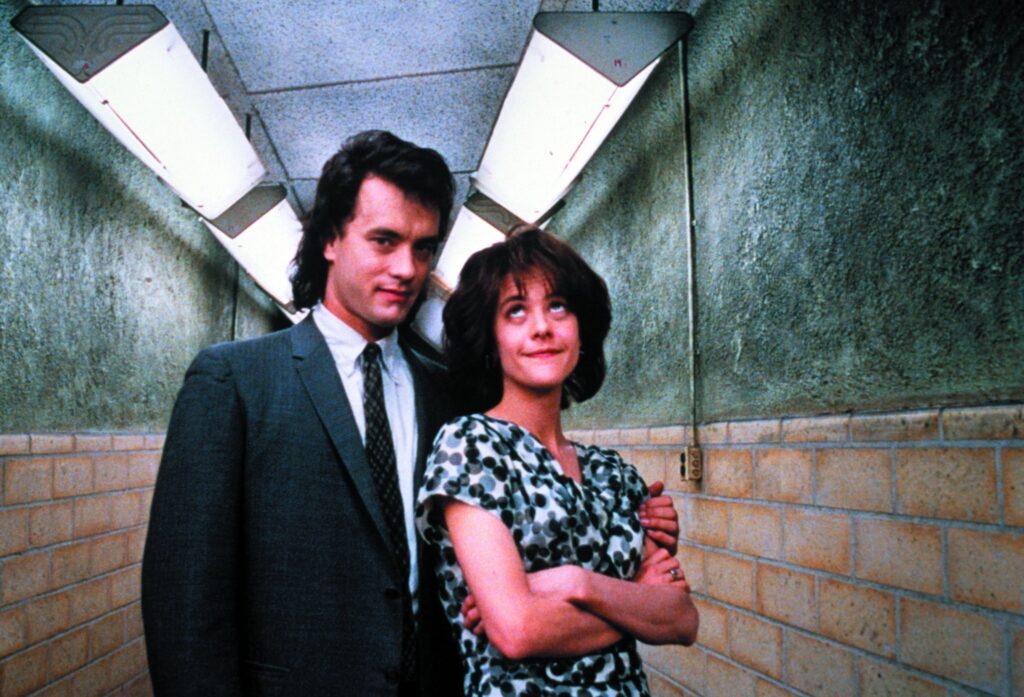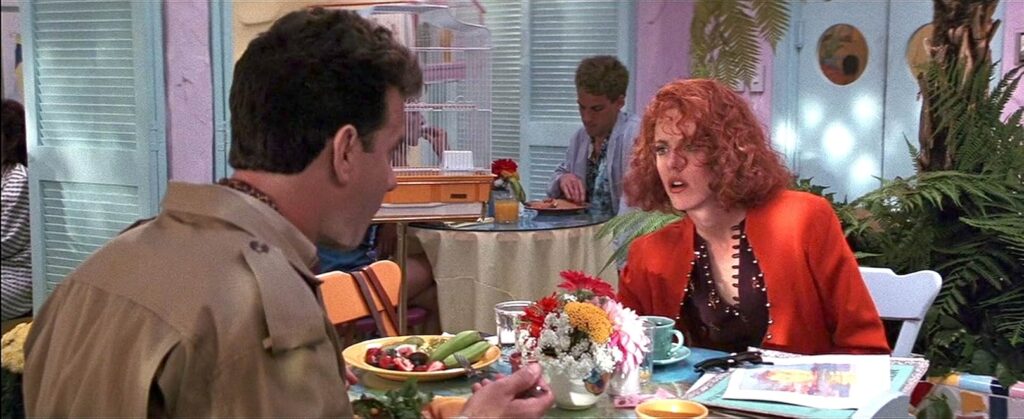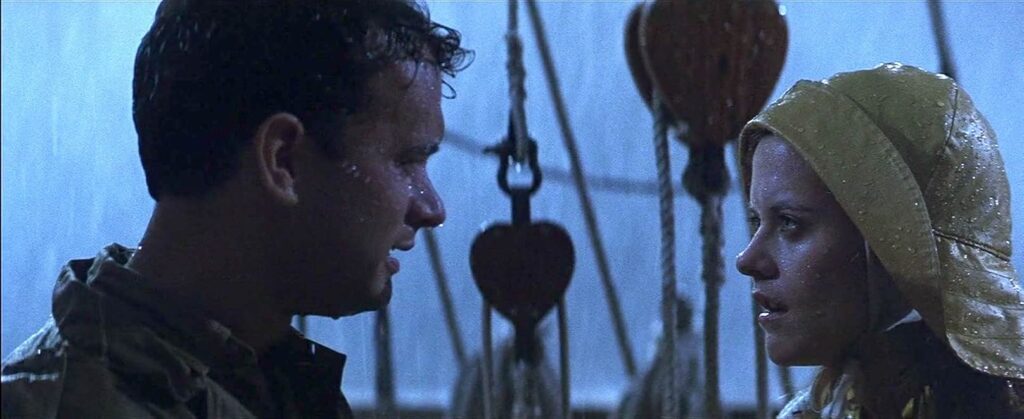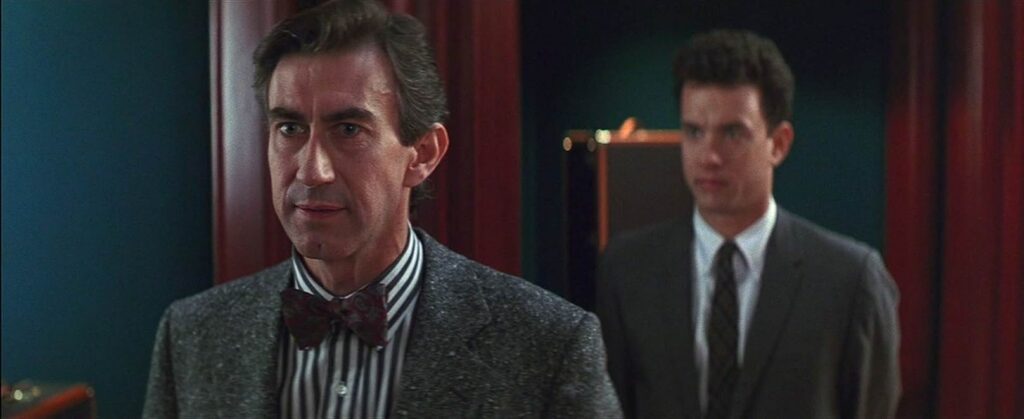Friday, March 9, 1990, was a pivotal day in my life, because it’s the day I picked up the phone and called the young woman who would, eight months later, somehow agree to marry me. I was twenty-six years old, living in Los Angeles, and awaiting the sacrament of confirmation in the Catholic Church (which I received the following weekend). The call itself was a bit of a “Hail Mary” because Sarah lived in Boston, which was then a long way from Los Angeles culturally as well as geographically. Also, she wasn’t home and I had to leave a message … on one of those old-fashioned cassette-tape answering machines … attached to the phone line she shared with her roommates. And she didn’t call me back right away, either. But from these inauspicious beginnings, our relationship sprouted, blossomed, and bloomed, and we were married the following year. It would be preposterous to say our path in life was straight or clear or even visible from that point, but at least the walkers were coming into focus. So I’m only exaggerating the temporal precision when I say that March 9, 1990, was the day when all the major parts of my life began to make sense.
By a strange coincidence, March 9, 1990, was also the release date for a movie about how we make sense of our lives, typically as young adults. I refer to John Patrick Shanley’s Joe Versus the Volcano, starring Tom Hanks and Meg Ryan. It scores an unimpressive 66% on the Rotten Tomatoes Tomatometer, and I have several good friends who walked out of it. But it is my all-time favorite movie, and I maintain it is a cinematic masterpiece. The protagonist, Joe Banks, is a young man in his early thirties whose miserable office job in a medical device factory is sucking the life out of him. But Joe can’t figure out what to do about it; he seems utterly lost in his unhappiness. Then one day, his doctor tells him he only has six months to live. A bracingly eccentric billionaire (Lloyd Bridges) then appears, mysteriously aware of Joe’s diagnosis, and he hires Joe to jump into a volcano on a tropical island to appease the angry fire god whom the natives blame for eruptions. And strangely enough, that’s when things start looking up for Joe, and everything he needs for paradise begins, piece by piece, to fall into place.
Wikipedia says Joe Versus the Volcano is a cult film, and I admit that I recommend the film a little too enthusiastically, looking for converts. Sometimes I tell people that it’s “the first Tom Hanks/Meg Ryan movie,” hoping that will bring in the rom-com fans. But what that pitch obscures is that Joe Versus the Volcano is only incidentally a rom-com; it is first and foremost an epic that combines elements of Homer’s Odyssey and Dante’s Divine Comedy. Indeed, at one of the early moments in Joe’s awakening, the Odyssey is one of three books he excitedly pulls from his desk drawer and shows to his co-worker. (The other two are Robinson Crusoe and Romeo and Juliet, and all three foreshadow the journey Joe doesn’t yet know he’ll be taking.) The Divine Comedy goes unmentioned in this scene, but the official trailer for the movie locates the beginning of Joe’s story “in the middle of a deep, dark factory,” recalling Dante’s own journey out of a deep, dark wood.
In recent years, the echoes of Dante have resonated the loudest for me. Like the pilgrim Dante, Joe begins the story in his thirties, and even by the end of the film we know almost nothing about the life he led before the opening scene. A misstep on the walk from the parking lot has left Joe “losing his sole,” as he observes to a co-worker in almost his first spoken line of the movie. Joe descends to the subterranean office past a sign that says not “Abandon all hope, ye who enter here,” but rather “American Panascope: Home of the rectal probe.”

Like Dante, Shanley (who wrote the screenplay and, at Steven Spielberg’s suggestion, made his directorial debut with this movie) creates an inspired vision of his underworld: an office of hellish monotony and meaninglessness. The sickly artificial light is physically repellant, and it makes the office’s occupants look half-dead already. The hat and coat rack is too broken to function as a hat and coat rack should; the coffee is too cold to warm anyone, too cold even to accept the improvement of the (artificial) creamer; and the “library” Joe manages is empty except for twelve copies of the same catalog—and in the first conflict of the movie we learn that even those twelve copies are insufficient to meet the company’s needs. A “DO NOT TOUCH” sign on the main drainpipe captures the fear in which the four officemates work. Perhaps most tellingly, the office is filled with medical prosthetics, including a pair on the boss’s desk that he handles absent-mindedly while droning into the telephone about what he didn’t say and isn’t arguing about. C. S. Lewis would surely appreciate the chestless dummy in the hallway to Joe’s work area. The human inhabitants of this milieu detest the brokenness and artificiality all around them, but they remain there, oppressed by false idols they lack the courage or even the imagination to smash.
Intimations of paradise somehow draw Joe forward from the start of his pilgrimage, just as they do with Dante. Seeking relief from the fluorescent artificiality of the office, Joe places on his desk a kitschy incandescent lamp that plays a music-box theme as a tropical island scene revolves on its translucent shade. His boss makes him remove the lamp, but that night Joe dines with the first of the three women played by Meg Ryan, and as they leave we see a sailor standing under a streetlamp outside, in front of a billboard advertising a movie called “Fire in Paradise (in Technicolor™).” On their walk home they see a skyline transformed into all the colors of Joe’s translucent tropical paradise lamp. Joe’s future is somehow already contained in the past that it will transcend.

The various stages of Joe’s search for meaning don’t map onto Dante’s Inferno, Purgatorio, and Paradiso (at least I don’t think they do), but like the pilgrim Dante, Joe begins by descending, then climbs a mountain, and completes his quest in an otherworldly place far “away from the things of man.” And also like the author Dante, Shanley leaves Joe spiritually transformed without really improving his material worldly prospects in any respect. At the end of the Divine Comedy, Dante is still exiled from Florence. At the end of Joe Versus the Volcano, Joe is … well, I won’t give away the ending, but let’s just say that Joe’s continued existence at the end of the movie is at best precarious.
What does Joe learn along the way? The main theme is undoubtedly that we only learn to live in freedom when we accept both the certainty that our earthly life will soon end, and the uncertainty about what “soon” will turn out to mean. This is what makes the movie so rewarding for twenty-somethings and thirty-somethings. The humorist Andy Rooney once said that “Death is a distant rumor to the young,” but at some point relatively early in adulthood most of us figure out that it is the key to all the rest. The date of our death is none of our business; it will take care of itself. Our job, as the doctor tells Joe when giving him the fatal but liberating diagnosis, is to recognize that we have “some time left … some life left.… Live it well.” We don’t ameliorate death’s sting by fearing it; we ameliorate it by finding true purpose in life and living it out as joyfully as we can for as long as we can.
Second, while we don’t choose our circumstances, we do choose our priorities, and in acting on these priorities we form our character. Joe begins as a man who simply does not know who he is—a point made explicit by the first of Joe’s three “guides,” a limo driver named Marshall (played by Ossie Davis). Joe tries out a number of different versions of himself in the brief time between his diagnosis and his voyage to the volcanic island, and almost all of them conspicuously fail to make Joe flourish. They are, nonetheless, necessary mistakes for someone who starts the process of self-definition where Joe starts it, as they bring him eventually to recognize that whatever else he is, he is essentially a man for others. That central fact explains Joe’s unhappiness at the beginning of his journey, it explains the choices he makes along the way, and it explains his ultimate triumph.

Third, the path one takes toward destiny is likely to be very crooked. In the movie, this crookedness is graphically represented at each stage of Joe’s pilgrimage, beginning with the logo of American Panascope and the walkway its employees trudge at the start of the workday; the re-appearance of that shape throughout the movie is one of the features one notices with repeated watching. More subtly, however, when one looks back from the end of the movie at the moments that turned out to be absolutely decisive for Joe’s future, one is struck by how unremarkable they seem in their immediate context. Hanks delivers his lines at these points not like Caesar crossing the Rubicon, but with all the matter-of-factness of a man answering the “paper or plastic?” question in a supermarket checkout line.
Of course, fear of death is not the only kind of fear out there, and Joe Banks is not the only person who struggles to conquer his fears. In fact, Shanley (again like Dante!) uses his protagonist’s conversations with other characters to shed light on the different shapes our fears take and the different ways we conquer them—or not. Particularly interesting in this regard are Joe’s conversations with each of the characters played by Meg Ryan. Why, we might ask, would one actress play all three? Is this supposed to be like Goldilocks and the Three Bears, with Joe looking for Mrs. Right? Well, it is partly a rom-com, so maybe there’s a little of that. But more importantly, the three women played by Ryan are all afraid of something different, and Joe’s compatibility with each of them (or not) doesn’t depend nearly as much on what they do for him as on what he does (or doesn’t do) for them.

And where is God in all this? That is a question Joe himself asks, both in his conversations with others and in his solitary moments. Actually, a scene in the script that did not make the final cut of the movie has Joe telling a priest in the first-class cabin of the plane that life is a miracle and he feels immensely grateful for it, but “cutoff. If there is a God, if there is some kind of music going through everything, I can’t hear it. I’m alone.” The priest tells Joe that he shouldn’t look for spiritual guidance in first class—which is probably true but was perhaps less than the situation called for. Maybe that’s why the scene didn’t make the cut.
The larger question, however, could not possibly be edited out of the movie. A relatively popular image from the movie shows Joe in front of a rising moon, and in the scene from which this image was taken Joe finds himself in conversation with “God, whose name I do not know.” How far Shanley means to go theologically is a fascinating question that it would be hard to discuss here without spoilers, but let me say this: pay attention to the luggage salesman (played by Barry McGovern, who honestly should have won an Oscar for this one scene of less than two minutes). In a shop the script describes as “quiet as a church,” their conversation begins like this:
Luggage Salesman: Have you thought much about luggage, Mr. Banks?
Joe: No, I never really have.
Luggage Salesman: It’s the central pre-occupation of my life. You travel the world, you’re away from home, perhaps away from your family. All you have to depend on is yourself and your luggage.
The luggage turns out to be a big deal in this movie. In a movie that begins “Once upon a time,” and in which everything else is plainly allegorical, what does the luggage represent? I keep coming back to that scene with the luggage salesman, and … hey, what’s up with the design of that salesroom?

Heights graduates and their families, and other young people who have been lucky enough to receive a strong religious formation, will probably not need all the help that Joe needs. But most twenty-somethings do need to sort out some pretty big questions that will affect the rest of their lives. If their faith is secure, they still need to figure out what their vocation will be, whom they will marry, and where they will live. This movie is perfect for that age group. And for those of us who are in a very different age group, but who have made similar journeys earlier in life, Joe Versus the Volcano is both an entertaining and a thought-provoking look back at a pivotal time in our lives.
- Content Warning: Solidly PG in all respects. There are two romantic encounters in which the point is what does not happen.
- Rating: 4.9 out of 5 (equivalent to “If I had to live in isolation for the rest of my life with only one movie, it might be this one”)
- Age Recommendation: 14+, only because younger viewers won’t be interested (if my kids are any indication)

